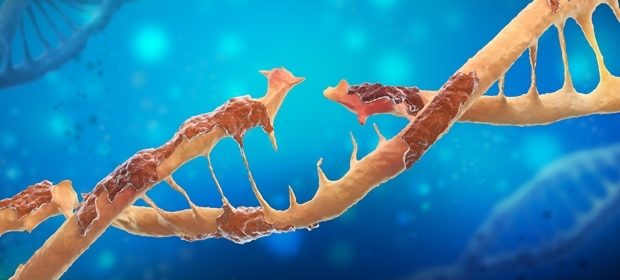Mathematical theory describes the process of checkpoint override by cells

Cells go through a life cycle that includes growing to the right size, being equipped to perform its functions, and finally dividing into two new cells. The cell cycle is critical because it ensures the perpetuation of the cell population and by extension of the greater structure they are a part of – for example a tissue in the body.
The cell cycle itself is tightly regulated by checkpoints, which prevent errors like mutations or DNA damage from being passed onto the next generation of cells. Each checkpoint acts as a kind of quality-control monitor (a biological "checklist") that ensures the order, integrity, and fidelity of the cell cycle. But checkpoints themselves often fail or are overridden after a prolonged stop of the cell cycle. If this happens in the human body, the result could be unregulated cell growth and division, which is what happens in cancer.
Checkpoints monitor cells or whole organisms and can stop either the cell cycle or the organism's development when they detect problems. But if cells or organisms are stuck with an error for a very long time, in many cases, they just continue dividing or growing; they don't stop forever. There is a real risk of dying if checkpoints do not stop at all, but also waiting forever is effectively equivalent to dying."
Sahand Jamal Rahi at EPFL's School of Basic Sciences
The math of checkpoint override
The question is then, how does the cell balance risk and speed when dividing? Although critical, checkpoint override is not very well understood, neither theoretically nor experimentally. But in a new paper, Rahi and his colleagues put forward the first mathematical theory to describe the process of checkpoint override. "Many organisms have to predict what's going to happen," he says. "You have a problem and you have to assess how bad that problem could be because the consequences are not certain. You could survive this or you might not survive this. So, the cell makes a bet either way. And in this study, we analyze the odds of that bet."
For a real-life model organism, the researchers looked at the budding yeast Saccharomyces cerevisiae, which has been used in winemaking, baking and brewing for centuries. "There are systems that monitor organisms, and among these systems, possibly the best studied is the DNA damage checkpoint in yeast," says Rahi. "So, we thought, let's look at that and see whether we can make sense of checkpoint overrides. We started with a mathematical analysis behind which was a very simple question: what if these organisms are balancing risk and speed because they have to predict the future?"
The risk-speed tradeoff
This tradeoff between risk and speed is similar to the quality control system of a factory assembly line: how fast can you produce things before the quality is affected? How do you balance quality and efficiency? "People have thought about this risk-speed tradeoff for checkpoints before, but they've only thought about it qualitatively," says Rahi. "It's not something that has been actually analyzed or taken seriously. So, I guess we can claim ownership of the idea!"
The scientists looked into the relationship between risk and speed. "The theory is basically balancing different probabilities, so we're computing the change in fitness if you wait versus if you continue with self-replication," says Rahi. "The organism has to come up with a strategy that involves continuously making the decision to wait or go depending on the gravity of the organism's situation at that time. Of course, waiting means that you will make fewer and fewer progeny. So the alternative is to take a risk, so the cell divides and there's a probability that it survives, and there's a probability that it dies." The theory calculates when risk and speed balance one another, determining the optimal "time". "The result turned out to be a very simple equation," Rahi adds.
Despite being developed for yeast, the theory applies broadly to cells because it only takes into account risk and speed, factors that affect all organisms. "There isn't a one-to-one correspondence between what happens in yeast and mammalian cells because mammalian cells have other constraints on them than just maximizing their own growth," says Rahi.
The cancer dimension
"But when cells become cancerous, they decouple their fitness from the fitness of their host. And then Darwinian evolution suggests that they should remodel their checkpoints to maximize growth. It's something we are interested in; one of our next steps is seeing whether cells rewire their checkpoints in an optimal way once they become cancerous."
Rahi does not expect that cancerous cells would abolish their checkpoint systems altogether. "They don't get rid of their checkpoints because then they take on too much risk in each division," he says. "Having no checkpoints whatsoever compared to when they were precancerous is also not optimal because then as soon as there's a problem they will die. So, we're interested to see whether they too aim for this state of optimal balance that our theory describes."
Ecole Polytechnique Fédérale de Lausanne
Sadeghi, A., et al. (2022) The optimal strategy balancing risk and speed predicts DNA damage checkpoint override times. Nature Physics. doi.org/10.1038/s41567-022-01601-3.
Posted in: Cell Biology
Tags: Budding Yeast, Cancer, Cell, Cell Cycle, DNA, DNA Damage, Evolution, Mammalian Cells, Next Generation, Saccharomyces Cerevisiae, Yeast
Source: Read Full Article